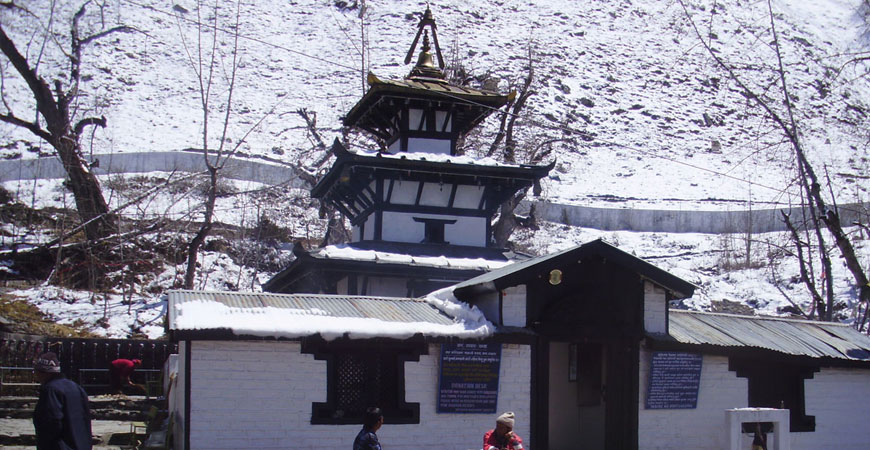Hiking and Rafting in Nepal
contact us
Per Person
Overview
Nepal is a great destination for hiking and rafting. The country is home to some of the world's highest mountains, including Mount Everest, and has many scenic hiking trails that offer stunning views of the Himalayas.These hikes vary in length and difficulty, but all offer incredible views and cultural experiences.
As for rafting, Nepal has many rivers that offer thrilling rapids and beautiful scenery. The Trishuli River, Seti River, and Bhote Koshi River are all popular rafting spots, with options for both beginner and experienced rafters.
Hiking and Rafting Tour provides you the knowledge of Culture, Traditions and History prevail in Nepal and even helps you to understand Nepal.
It's important to choose a reputable guide or tour company for both hiking and rafting in Nepal to ensure safety and a great experience.
Hiking and Rafting Tour is for very beginors hiker and Rafter. No need any experience before hand but you may have real good experience for small adventure of hiking and Rafting in Nepal.
NOTE
We have several other adventure activities, and optional programs you may choose such as:
- Mountain Flight can be enjoyed for about 1 hour morning in Kathmandu.
- Bunjee Jumping can be add either near Kathmandu or near Pokhara.
- Paragaliding can be done in Pokhara.
- Zip lining also possible in Pokhara.
- More days hiking and other activities like Jungle activities can be adjust on the program
Included/Exclude
- Welcome Nepali Dinner with cultural programs
- All surface transfers including arrival and departure transfers in a private car
- One day rafting at Trisuli River
- Airfare Pokhara to Kathmandu
- Guided tour in Kathmandu including one English speaking tour guide and one hiking guide for hiking days, all entry fees, etc.
- Three star hotel on bed and breakfast basis, twin sharing rooms
- Two lunches, one dinner and one breakfast, tea and coffee during the two day hike,
- Simple accommodation on mountain lodges for one night
- Salary, insurance and all expenses of our guide and porter for the hike.
- All the expenses of personal nature, Nepal entry visa (USD 30 for 15 dyas multiple visa) and one photograph, granted upon arrival in Kathmandu. Water, alcoholic drinks, tips, lunch and dinner in Kathmandu and Pokhara.
Trip Itinerary
Day 1: Arrival in Kathmandu
After your arrival at Kathmandu, one of our representatives will greet and transfer you to the hotel. Later afternoon includes the preparation and short briefing of the journey. And the foremost night will be spent at the hotel itself.
Day 2: KATHAMNDU SIGHTSEEING TOUR
Today, sightseeing around the popular cultural heritage sites in Kathmandu will be organized. Initially, you will be taken to the holiest Hindu temple of Nepal, Pashupatinath. Subsequently, you will visit the self born Swayambhunath where you can even enjoy the view of beautiful Kathmandu valley, then to second largest stupa in the world, Bouddhanath. Durbar Squares of Kathmandu and other two main sub cities Bhaktapur and Patan will be visited as well which are absolutely preserved. After the entire day journey, you will be staying overnight at hotel.
Day 3: KATHMANDU - RAFTING - POKHARA
After breakfast you take a drive for 3 hours from Kathmandu to Rafting starting point. Soon after you reach to Charaudi, you begin with rafting at Trisuli River for around 2-3hrs followed by light lunch at River side. Later you continue your drive for 2hrs, to reach Pokhara and stay overnight at hotel.
Day 4: POKHARA TO DHAMPUS
Today you begin your day with a drive from Pokhara to Phedi for about 45 minutes and hike to Dhampus hill which takes around 3.5-4 hours. You can enjoy great Mountain View and lovely sunset. You will stay overnight at the lodge.
Day 5: BACK TO POKHARA
Early in the morning, you watch the sunrise on the stunning Himalayan panorama and slowly walk back to Pokhara. Today is a free day so you can relax or explore Pokhara and visit the eye-catching sites around beautiful lake side areas. Later you will be staying overnight in the hotel.
Day 6: KATHMANDU TO POKHARA
After Breakfast, you return back to Kathmandu by a flight. You can either hang around on your own or go for shopping in last day in Kathmandu.
Day 7: Departure
Today is the final day of your trip, you will be transferred to the Airport for the departure or to your next destination.
Note: This itinerary can be customized as per situation.



